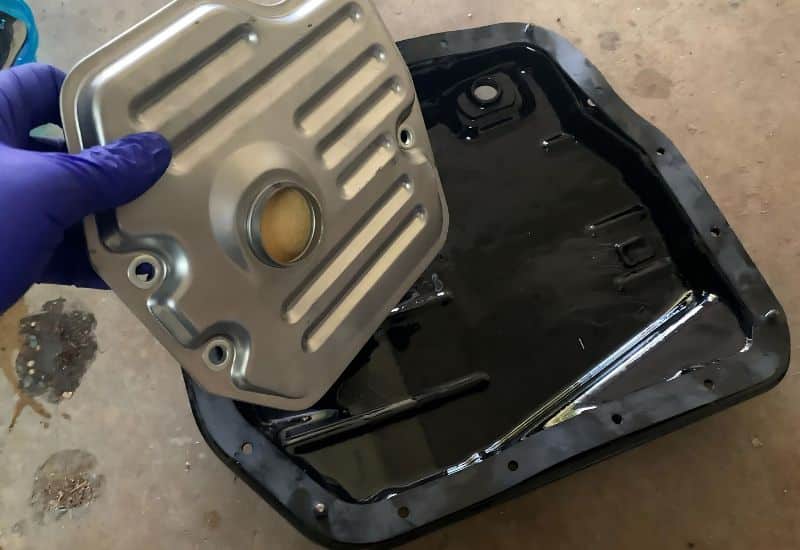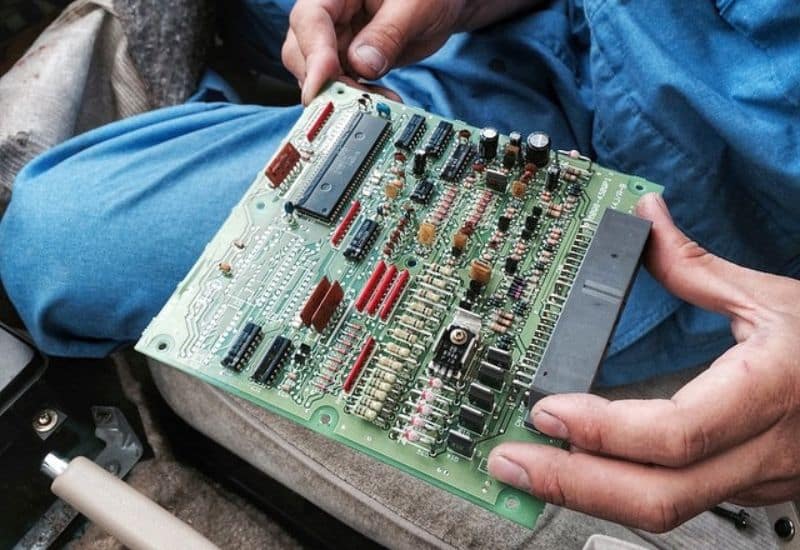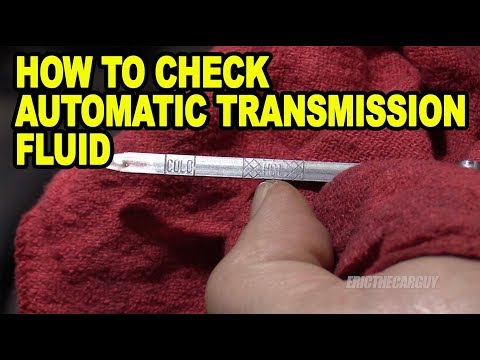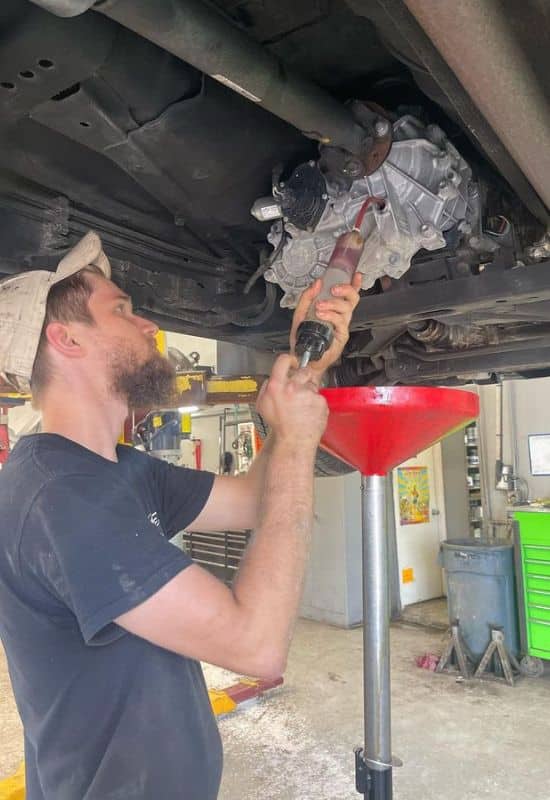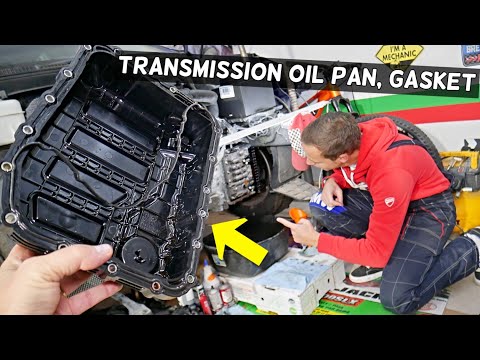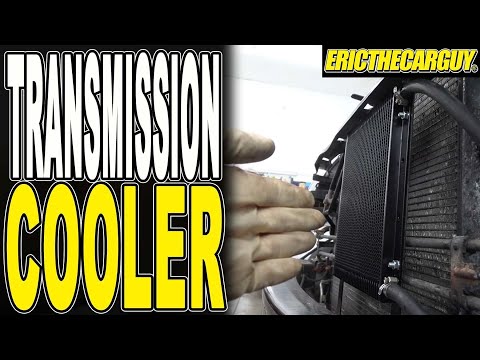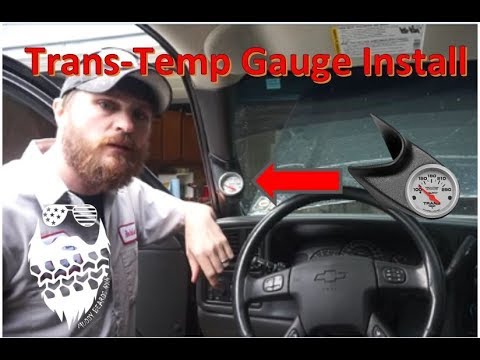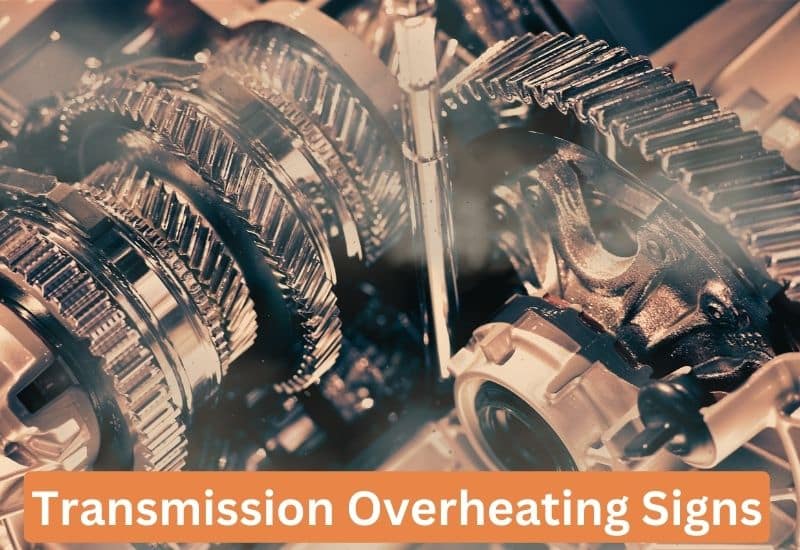
Strange acrid burning odors, slow shifting, slipping gears, or getting stuck in gear are all common signs of an overheating transmission. Though even if you can get pulled over to let everything cool down, you still have to figure out what’s causing the transmission to overheat.
At the top of the list, degraded transmission fluid, low transmission fluid, heavy towing, or friction caused by an internal mechanical problem are some of the more common causes of an overheating transmission.
Understanding what’s got your transmission all hot under the collar starts with understanding the role of transmission fluid and how it affects normal operating temperatures. This will help you better understand what your overheating transmission is trying to tell you and what you might be able to do about it.
Don’t wait for the temperature warning light to come on. Read on to learn what can cause your engine to overheat, what to do if it happens to you, and what steps you can take to ensure that your engine keeps its cool all summer long.
What Transmission Temperature Is Considered Normal?
In an automatic transmission, the average operating temperature is around 175 to 220 degrees. Though in abnormally cold weather, you might see it dip to as low as 160. When you start towing something heavy, the drag on the transmission can cause the temperature to rise.
As you start to push the transmission temperature by doing something like putting it through a long, heavy towing session, the extra heat can start to degrade the transmission fluid. As the transmission gets hotter and hotter, the risk of it locking up or being damaged by severe friction increases. For most transmissions, the point of failure is right around 270 degrees.
What Is Transmission Overheating?
Once a transmission starts getting over 220 degrees, the overheating effect can start to break down the lubricating properties of the transmission fluid. This causes increasing friction in the moving gears and other metal components, which lets it get hotter and hotter.
At the same time, hot metal components start to expand, which can make it hard for the transmission to change gears up and down. It can even cause gears to slip out or cause metal components to grind on each other, leaving tiny metal flakes in the transmission fluid.
As the transmission temperature and the fluid rocket up to 270 degrees, the chances of the transmission seizing up and suffering severe damage increase exponentially.
The 7 Most Common Causes for Transmission Overheating
The most common causes of transmission overheating are low transmission fluid, degraded transmission fluid, and long, heavy towing sessions. However, hot weather and mechanical faults inside the transmission can also contribute to the overheating effect.
1. Low Transmission Fluid or a Fluid Leak
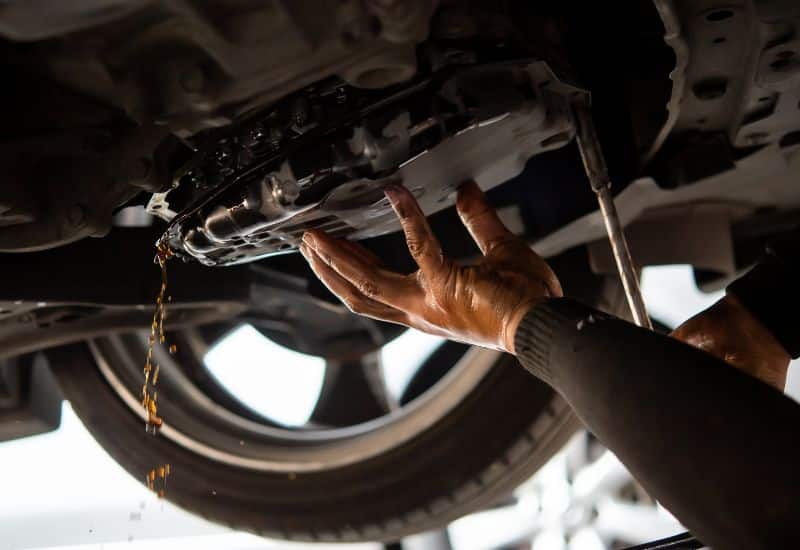
Transmission fluid plays a critical role in helping to lubricate all the moving parts inside the transmission. If the fluid level is low, the gears and other moving parts inside the transmission develop friction, creating heat. As the heat builds up, the low transmission fluid does an increasingly worse job of lubricating the gears and can even start to break down, causing heat from friction to rise.
The concern here is how the transmission fluid got low in the first place. This could be a minor leak that goes unnoticed or you are failing to refill your transmission all the way after changing the fluid. If the transmission fluid looks low on the dipstick, check the bottom of the car for any signs of an obvious leak.
2. Degraded Transmission Fluid
Heat and time can start to degrade the lubricating properties of your transmission fluid, increasing the friction between all the various moving components, which increases the chances of your transmission overheating. Once the transmission fluid starts to get over 200 degrees, it can lose a little of its lubricating capability. Though once it gets over 220 degrees, it can form varnish and the lubricating properties of the transmission fluid start to nosedive.
Time and high mileage can also start to degrade your transmission fluid. Different models need to change the transmission fluid based on mileage and the condition of the fluid. Most automakers recommend replacing your transmission fluid every 30,000 to 50,000 miles.
As transmission fluid degrades, it permanently loses some of its lubricating ability. If you were to put your light-duty truck through a long, heavy towing session where the temperature of the transmission and fluid goes up to 230 to 240 degrees. Even once the fluid is allowed to cool down again without incident, the lost lubricating capability will leave your transmission increasingly prone to friction and overheating in the future!
3. A Radiator Problem
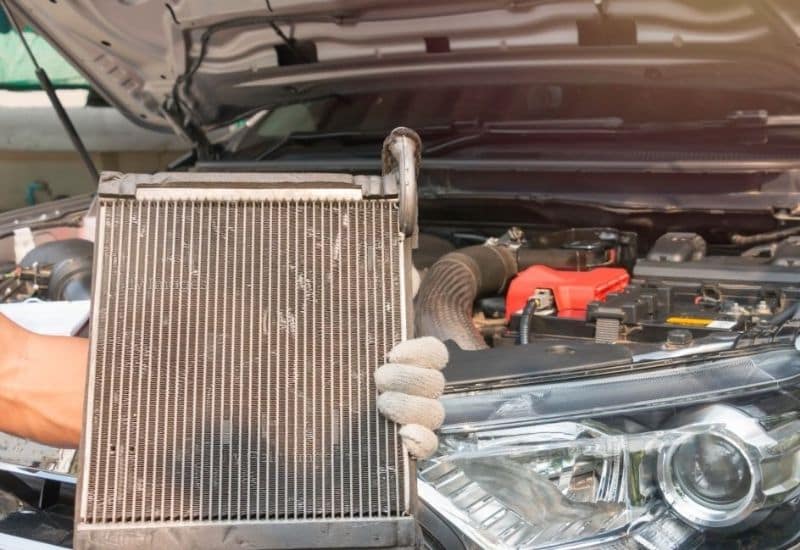
A problem with the engine cooling system’s radiator or the transmission radiator can make it hard to dissipate heat leading to gradual overheating. In a properly working radiator, the coolant passes through the core and cools, settling into the bottom, where it passes over a metal tube that holds recirculating transmission fluid. This is a tube within a tube that allows the cool engine coolant to pass over the transmission fluid, extracting heat energy without ever allowing the two fluids to mix accidentally.
If your coolant level is low, or there’s a problem with the radiator, the system won’t be able to circulate and dissipate the heat efficiently. Especially if there’s a blockage in the radiator or the engine coolant level is too low to circulate properly.
In a scenario like this, you’ll start to notice your engine temperature gauge on the dash creeping up. At some point, it will then rocket up quickly as the thermal load of the engine and the transmission serve up an overheating double-whammy.
4. Hot Weather & Traffic

Severely hot weather or stop-and-go traffic increase transmission temperature, increasing the risk of overheating. Hot weather and bad traffic won’t cause overheating in a properly functioning, well-maintained transmission. It can take another fault, such as slightly degraded transmission fluid, and worsen it.
5. Long, Heavy Towing Sessions
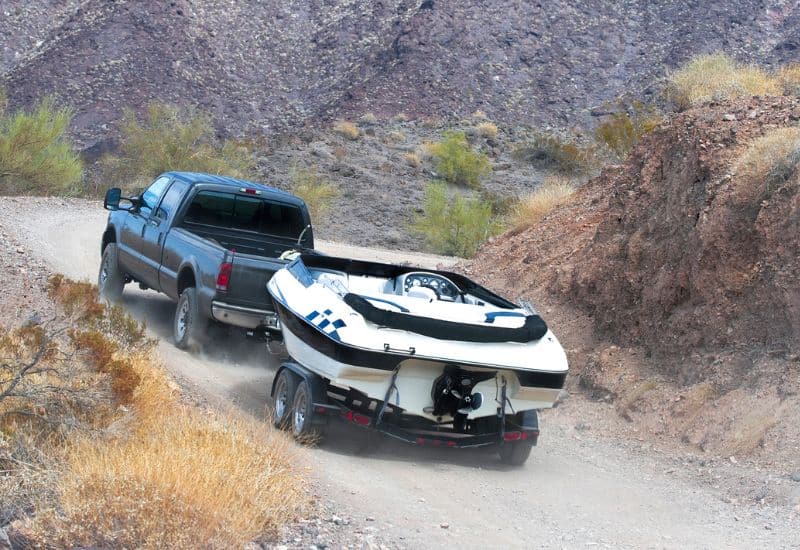
Anytime you ask a vehicle to tow something, the excess energy and friction inside the transmission increases the risk of overheating. At the same time, the engine is likely running hotter, which makes it harder for the radiator to dissipate heat. If the temperature of the transmission fluid starts to climb over 220 degrees, the transmission fluid itself can start to degrade, losing some of its lubricating properties, further adding to the overheating risk.
Ideally, you should never tow more than 80% of your vehicle’s maximum towing capacity. Though even when you start to go over 50 to 60%, and you have to tow for a long distance, the heat energy in the engine, radiator, and transmission can start to build.
If you’re towing a heavy load, it’s natural for your engine temperature gauge to run a little warmer than usual. If you see it going over the 75% mark or it suddenly starts ramping up to kiss the red line, you have a cascade heat reaction in the engine bay and transmission. You must pull over as soon as possible to let it all cool down. Then you can assess the state of the transmission fluid.
6. A Solenoid Problem
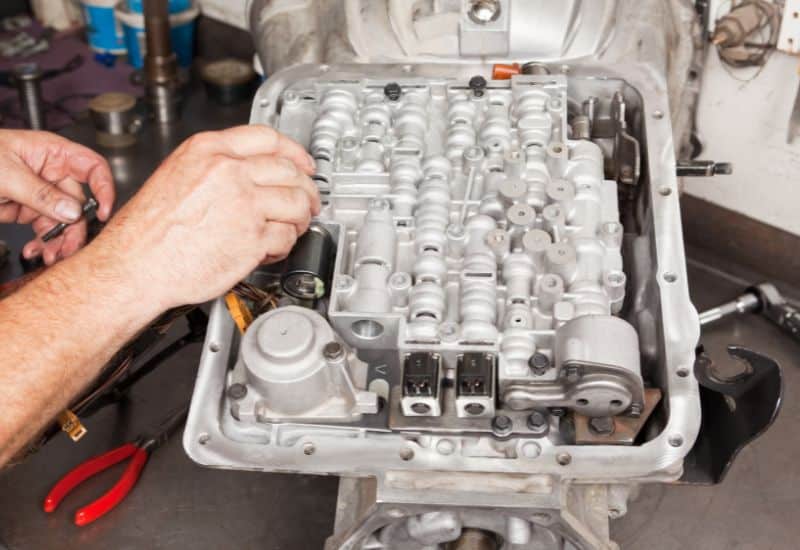
A failing or stuck solenoid in the transmission can also cause it to overheat rapidly, making it hard to change gears. In a properly functioning automatic transmission, the Transmission Control Module (TCM) tells the electro-hydraulic solenoid valve to open and close to divert the flow of transmission fluid in and out.
This plays a role in how the automatic transmission changes gear, as well as helping move transmission fluid out to the radiator to be cooled. If the solenoid is stuck closed, or the TCM fails to send the signal to open, the transmission won’t be able to dissipate heat safely.
A stuck solenoid might cause the transmission temperature to creep up slowly. However, it will reach a point where the overheating in the transmission fluid and moving parts causes erratic gear changes. The car might get stuck in neutral, or you’ll find it revving high when you’re braking as the torque converter struggles through the process of downshifting.
7. A Bad TCM or Failing Transmission Sensors
The TCM is essentially the brain of the transmission, and it relies on a series of sensors to monitor performance as well as tell the solenoid valves to open on demand. If any of these multiple electric sensors fails, or the TCM itself has a problem, it can cause heat to build up rapidly.
This might be from the TCM choosing the wrong gear, which forces up the friction heating effect, or it could be a sensor failing and the TCM flies blind with the solenoid closed. Either one of these faults can cause the transmission to overheat rapidly with little warning.
Warning Signs Of An Overheating Car’s Transmission
The early warning signs that your transmission is overheating can start out subtle, like stubborn gear changes or a strange burning smell. Then suddenly, a check engine or check transmission light comes on, and you’re thrown into a panic. Being able to recognize the warning signs of an overheating transmission quickly can save you a lot of money in the long run.
1. The Engine Revs When Braking

An overheating transmission with dirty transmission fluid will sometimes rev when you brake. In a case like this, the torque converter and the TCM don’t effectively downshift the transmission. Chances are good that there’s also a stuck-closed solenoid that’s preventing the transmission fluid from circulating out to the radiator.
Pressure builds up in the rapidly heating transmission fluid, which interferes with the way the torque converter operates. If you catch it early, you might be able to pull over to let the transmission cool down before catastrophic damage happens to the gears.
2. Delayed Gear Changes

Dirty transmission fluid and expanded metal components inside an overheating transmission can cause delayed gear changes or erratic shifting. Especially in automatic transmissions that have overheated in the past or if you’ve let your transmission go more than 50,000 miles without changing the fluid.
Sometimes dirty or degraded transmission fluid can cause a solenoid to get stuck closed. The transmission heats, and the pressure inside the case interferes with the normal gear changes the automatic transmission tries to make. At this point, the transmission is either overheating or about to overheat.
3. Transmission Keeps Slipping Into Neutral
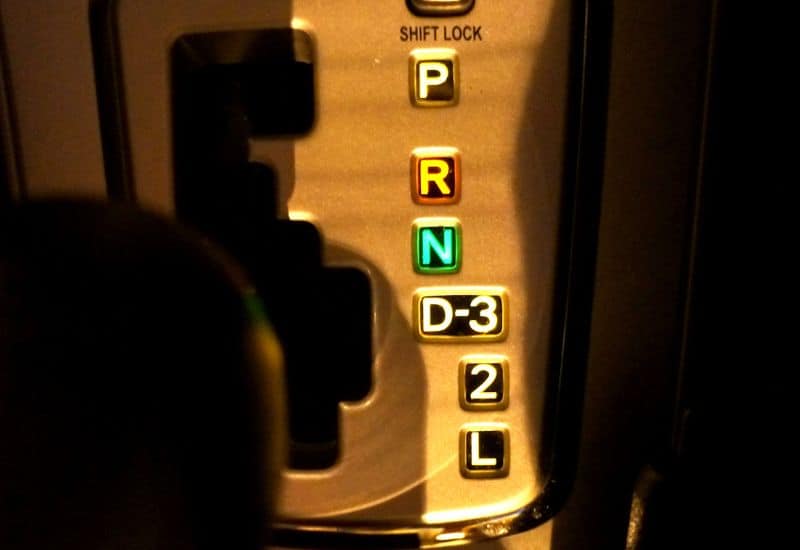
An overheated transmission can be prone to get stuck in neutral. This is often due to dirty transmission fluid and/or a stuck solenoid. Though it could also be caused by low transmission fluid, which might allow the car to go into first gear for a few moments until the filter can’t pick up any more fluid, and it surprisingly slips into neutral. Then the transmission fluid returns to the pan, where the filter can pick it up again, and you’ll surprisingly be able to get it into first gear again, only to restart the cycle.
Even if you can make it a reasonable distance before it slips out of gear, the wise move in a scenario like this is to make sure the transmission has sufficient fluid. If you top it up to the appropriate level and you find it slipping into neutral again, or the level is suddenly low, then you likely have a leak somewhere and the car needs to be parked until it can be fixed.
4. Burning Plastic Odors

An overheating transmission often will give off odors like burning plastic, or melting wires, that saturate the engine bay. You might even notice them coming through the dash vents if you have your heating set to fresh air. This is a telltale sign that the transmission fluid is starting to break down, and the external case of the transmission will be scorching hot!
5. Grinding, Shaking, or Vibrating When Accelerating
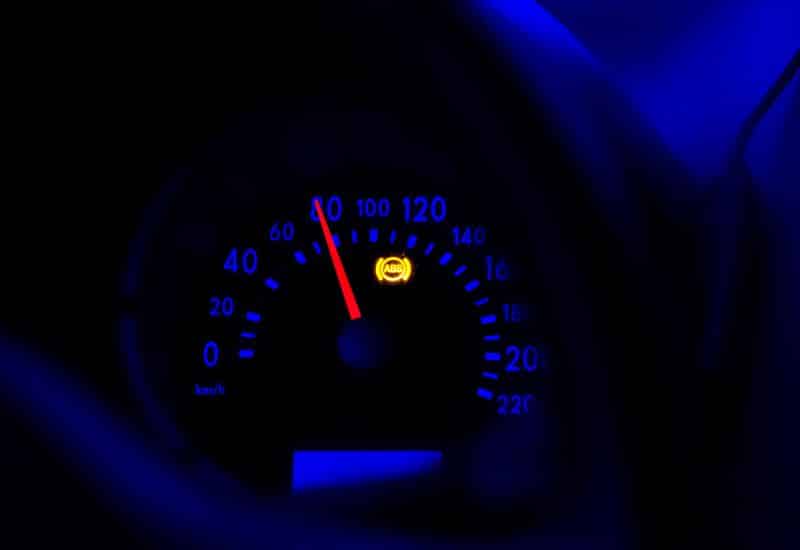
An overheating transmission with degraded transmission fluid often gives off a grinding noise or vibrates when you accelerate. This is a telltale symptom of friction between the gears and other moving parts. Though this could also happen if you have low transmission fluid.
The biggest warning sign here is if you check your fluid and you find little metal flakes in it. This means that the gears have been grinding on themselves, and you might lose a gear or a component shortly. Changing the transmission fluid as soon as possible is a must, as the metal flecks are going to impede the lubricating properties of whatever fluid is left in the pan.
6. A Check Engine or Check Transmission Light
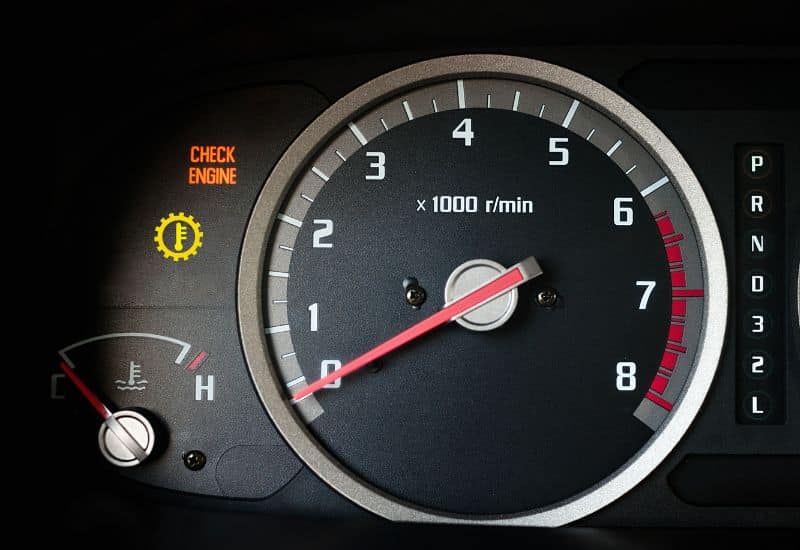
Many newer cars have a check engine or check transmission light that will come on when the transmission starts to overheat. It can vary from one automaker to the next. Sometimes, the TCM detects an over-threshold temperature in the transmission fluid, and it trips the ECU to turn on the check engine light. Sometimes the TCM can activate a specific check transmission light on its own.
Anytime the ECU or TCM turns on a warning light, it will also throw and store a code. You can quickly hook a code reader up to it to better understand what’s wrong.
Things You Can Do to Prevent Your Transmission From Overheating
Preventing your transmission from overheating starts with good old-fashioned general maintenance. However, you can also do a few things to avoid overheating if you’re noticing the early signs of your transmission acting up. To avoid being stranded on the side of the road, take steps to keep your transmission from getting too hot.
1. Check Your Transmission Fluid
You should check your transmission fluid at least once a month. This will help you catch any previously unnoticed leaks, but you’ll also want to look at the color and consistency. If the fluid on the dipstick is low, you’ll need to top it up to the correct line again.
Though this also means that you’re losing transmission fluid somewhere, and you need to find the leak sooner rather than later. Driving around constantly low on transmission fluid not only puts it at risk for overheating, but it can also cause friction damage to the gears.
While you’re checking the fluid, also check the color and consistency. Ideally, you want the transmission fluid to be a semi-translucent pink color. If it looks brown, the fluid is getting old, or it’s starting to degrade from overheating.
If the transmission fluid has little metal flakes in it, then you have gears and other moving components grinding inside the transmission. The fluid needs to be replaced entirely, and you probably should have a transmission specialist perform a checkup.
2. Change Your Transmission Fluid As Needed
Check your owner’s manual for recommendations on how often you need to replace the transmission fluid. Then stick to that range habitually.
Most automakers recommend replacing the transmission fluid every 30,000 to 50,000 miles. Though if you live in a hot climate or your daily commute calls for a lot of stop-and-go driving, you might want to change your transmission fluid out 10,000 to 15,000 miles sooner than recommended, especially if you have a car that’s more than ten years old or has over 100,000 miles on the odometer.
3. Consider Adding a Deeper Pan
Upgrading the size of your transmission fluid pan increases the total volume of fluid available to circulate through the transmission. This helps distribute the heat better, reducing the overheating risk. If you do happen to develop a minor leak somewhere in the system, the extra fluid can buy you a little extra time before low transmission fluid problems start popping up.
There are some aluminum transmission fluid pans out there. They do a better job of dissipating heat than traditional iron pans, which can sometimes retain heat energy independently.
The cost to upgrade to a larger transmission fluid pan can range from $350 to $700.
4. Consider Adding a Transmission Radiator
Some newer pickup trucks and cars come with an independent transmission radiator, or they’re engineered to make adding an aftermarket radiator easy. This augments the natural heat dissipation of the relationship between the transmission and the original radiator.
If you do a lot of towing or your daily commute calls for a lot of stop-and-go traffic in hot weather, then adding an independent transmission radiator might be a good idea. Stacked plate radiators are reasonably priced and will buy you some much-needed thermal insurance.
The cost to add a transmission radiator ranges from $550 to$775.
5. Consider Adding a Transmission Temperature Gauge
Only a small number of vehicles come with a transmission temperature gauge in the instrument cluster. Though you can easily install an aftermarket gauge that will let you closely monitor the temperature of your transmission. This is a common modification in a lot of older commercial pickup trucks that have to tow equipment trailers.
They usually cost less than $100, and if you’re a reasonably capable DIY mechanic, you should be able to do it yourself on a Saturday afternoon.
6. Maintain Your Engine Cooling System
The transmission lines that run to your radiator rely on a properly functioning engine cooling system. If your engine coolant is low, you have a stuck closed thermostat, the radiator fan is bad, or the engine itself is running overly hot, the radiator won’t be able to help cool the transmission. Keeping your radiator in good condition ultimately goes a long way toward keeping your transmission from overheating.
Frequently Asked Questions
Can I Drive with My Transmission Overheating?
Driving with a transmission that’s running hot or showing signs of overheating is always a bad idea. You risk damaging gears and other internal moving parts, and the heat can cause the transmission fluid to break down further. This adds even more friction and heat, compounding the risk of doing severe damage to the transmission in a relatively short amount of time.
How Much Does It Cost to Fix an Overheating Transmission?
If you catch it early, the cost to fix an overheating transmission might be as simple as replacing the mildly degraded transmission fluid. If it was caused by towing a heavy load, extremely hot weather, or stop-and-go traffic, then you might not need to find any other faults.
Conclusion
The earliest symptoms of an overheating transmission often start out as hesitating gear changes and getting stuck in gear. Sometimes the transmission will start slipping out of gear or seemingly popping itself back into neutral especially if the transmission fluid is low.
As the transmission temperature starts to rise, you might notice strange burning odors like melting plastic coming through the vents or permeating the engine bay. You might even get a check transmission or check engine light on the dashboard.
A lot of times, transmission overheating can be traced back to either low transmission fluid or degraded transmission fluid. Both of these scenarios lead to excess friction in the relationship between the gears, which only adds to the heat and causes the fluid’s lubricating properties to break down.
Degraded transmission fluid or fluid contaminated by metal flecks can also cause one or more transmission solenoids to stick. This can affect the pressure necessary to change gears and keep transmission fluid from properly flowing to the radiator to be cooled. If you’ve started to notice signs of your transmission overheating, the wise move is to pull over and let it cool down.
While you’re waiting, you can check some of the basics, like the color and volume of the transmission fluid and any noticeable signs of leaks under the car. Chances are good; you’ll need to take it to a mechanic, but if you’re lucky, it might just need a transmission fluid change.

Written By
Jason Farrell
Jason Farrell is a certified master technician, the editor of Mechanic’s Diary in Pittsburgh, Pennsylvania. He is ASE (Automotive Service Excellence) certified and earned a Bachelor’s Degree in Automotive Technology from Pittsburg State University. With nearly 18 prior years of experience in the automotive field, he has extensive knowledge about Domestic, European, and other foreign makes and models of cars and light trucks. Jason’s experience working as a technician and service manager at dealerships, gave him the experience and know-how of most aspects of inspection, diagnosis, and repair from engine and drivability to electrical, HVAC, brakes, steering and suspension and everything in between.

